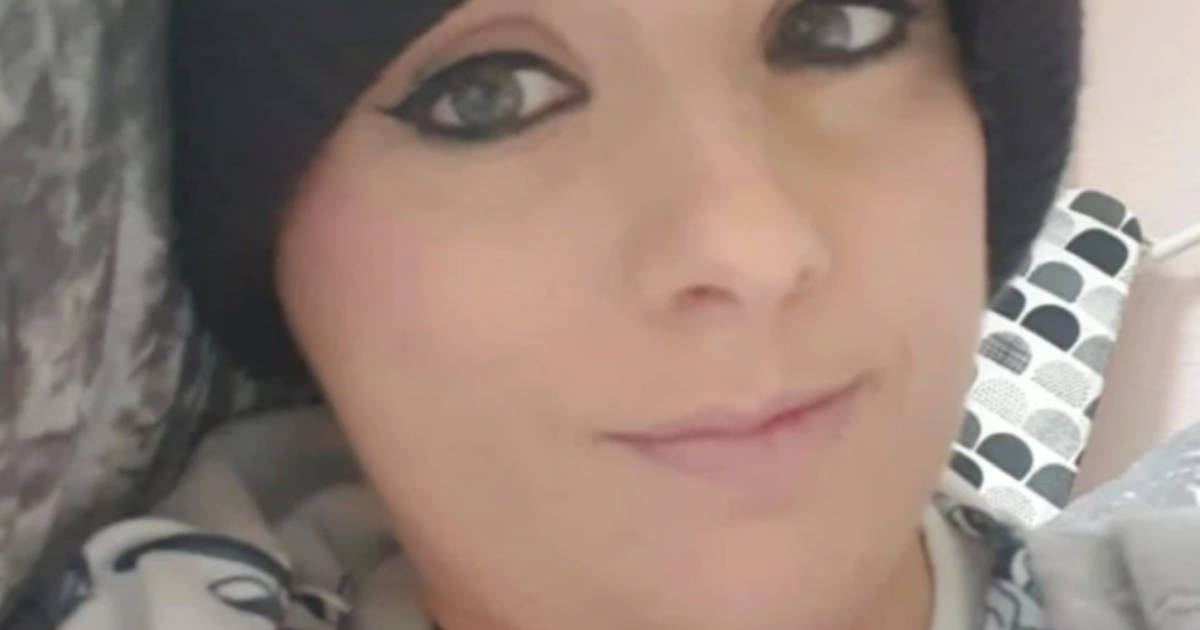The Importance of Breast Self-Exams
- At 29, Sophie Woodhouse was diagnosed with a fast-moving Stage 2 breast cancer, Now, at 31, she is living with early menopause and cancer-free.
- Woodhouse, who underwent aggressive chemotherapy treatment and surgery to remove the tumor, is now spreading awareness about breast cancer.
- It’s important to be aware of how your breasts normally look and feel, a major factor when it comes to breast cancer detection. Doing regular self-exams is one way to familiarize yourself with how your breasts normally feel so that you will be able to identify anything out of the ordinary like a lump or hard mass.
"I was sweating on the treadmill at my local gym when I grabbed my t-shirt under my left armpit to cool myself. My hand brushed over a lump and despite the sweat, I felt a chill run through me. The lump hadn't been there a week earlier,” 31-year-old Woodhouse, from Manchester, England, told Fabulous Magazine. “Initially I thought it might be a pimple or ingrown hair.”
Read More
She explained, “My GP saw me immediately, felt the lump and sent me straight to the hospital. Within two days I was having an ultrasound and biopsy. Four days later I was told I had ‘Stage 2 Grade Three' fast-moving cancer.”
Stage 2 means the cancer is either still in the breast or it has spread to the neighboring lymph nodes or both. Grade 3 means the cancer is spreading more aggressively.
Woodhouse said that instead of her body fighting off the aggressive cancer, the oestrogen in her body was speeding up the cancer’s growth.
“Within a week of the biopsy the lump had doubled in size. I was lying awake at night feeling it pulsing and getting larger. As a single mom, I was terrified about leaving my daughters motherless and feeling like I was alone in this battle.”
The single mom underwent multiple rounds of aggressive chemotherapy and lost her hair, all while taking care of her two daughters, has now become an advocate for breast cancer awareness for women under 30.
After posting to social media about her story, many women reached out to Woodhouse admitting they didn’t know cancer could happen so fast or that the National Health Service (NHS) could offer “fast-tracked treatment.”
“I was lucky my GP and local hospital could see me during lockdown and ensure treatment. They made it clear it was life or death and wait times became irrelevant,” Woodhouse, who had surgery in March 2021 to remove the cancerous lump in her breast.
Getting To Know Your Breasts With Self-Exams
And on September 15, 2022, Woodhouse had her ovaries removed “to prevent a recurrence of the cancer due to the oestrogen the ovaries produce and to prevent cervical cancer,” she explained.
The chemotherapy treatment, which she had done to reduce the size of the tumor and stop it from spreading before surgery, caused her to get early menopause and she’ll continue treatment until age 50.
“The HER 2 cancer I was diagnosed with means even after the lump is removed you need to continue treatment to prevent my body from producing oestrogen for the cancer to feed off,” she added.
Woodhouse credits the worldwide support she received on social media to help her get through “some very dark times,” explaining, “Many women feel they are alone when they get diagnosed but I want people to know cancer isn’t a death sentence. Of course, it can be; if you don't check your breasts and put off seeing a doctor, you're risking your life.”
“My message is simple: check your boobs, see your GP and don't be scared. I'm in breast cancer recovery, early menopause and been given all clear,” she concludes. “That hasn’t stopped my daily boob checks and you should do the same. Men should also check their own breast tissue because they can suffer from breast cancer too.”
How To Perform Self-Exams
Getting to know how your breasts look and feel may be one of the best ways to recognize when something is not quite right. "When we think about breast cancer prevention and awareness, the first step is that women need to feel comfortable with their breast and know what their breasts feel like normally," says Dr. Elizabeth Comen, a medical oncologist at Memorial Sloan Kettering Cancer Center and an advisor to SurvivorNet. Here's how, according to the National Breast Cancer Foundation:
- While standing straight in front of a mirror, place your hands on your hips and look at your breasts for any swelling, bulging, changes in shape of breast or nipple (inverted), redness, rashes, or any fluid leaking. Then do the same with your arms in the air.
- Next, while lying down, use your right hand to examine your left breast and vice versa, while using your first three fingers to apply pressure. Ensure you cover the entire breast area, from your collarbone to below your ribcage and from your armpit to your cleavage area. Do the same self-exam standing or sitting up. Be sure to use light to medium pressure for the middle breast area and firmer pressure when feeling deep breast tissue.
Once you get the hang of it, Dr. Comen recommends you do it once a month after your period. However, it should be emphasized that breast self-examination is NOT a replacement for mammography.
Aggressive Breast Cancer in Young Women
Symptoms of Breast Cancer
Being aware of how your breasts normally look and feel is an important factor when it comes to breast cancer detection. Doing regular self-exams is one way to familiarize yourself with how your breasts normally feel so that you will be able to identify anything out of the ordinary like a lump or hard mass.
Below are some other symptoms to look out for:
- New lump in the breast or underarm (armpit)
- Any change in the size or shape of the breast
- Swelling on all or part of the breast
- Skin dimpling or peeling
- Breast or nipple pain
- Nipple turning inward
- Redness or scaliness of breast or nipple skin
- Nipple discharge (not associated with breastfeeding)
Of course, these symptoms can be due to things other than cancer. For example, a lot of women experience breast tenderness during certain times in their menstrual cycles. If you're worried talk to your doctor about it. They may want to perform an exam, or even schedule a mammogram just to be safe.
The Importance of Breast Cancer Screening
Screening for breast cancer is typically done via mammogram, which looks for lumps in the breast tissue and signs of cancer. The American Cancer Society (ACS) says women should begin yearly mammogram screening for breast cancer at age 45 if they are at average risk for breast cancer. The ACS also says those aged 40-44 have the option to start screening with a mammogram every year, and women age 55 and older can switch to a mammogram every other year, or they can choose to continue yearly mammograms.
For screening purposes, a woman is considered to be at average risk if she doesn't have a personal history of breast cancer, a strong family history of breast cancer, a genetic mutation known to increase risk of breast cancer such as a BRCA gene mutation or a medical history including chest radiation therapy before the age of 30.
Beyond genetics, family history and experience with radiation therapy, experiencing menstruation at an early age (before 12) or having dense breasts can also put you into a high-risk category. If you are at a higher risk for developing breast cancer, you should begin screening earlier.
In a previous interview with SurvivorNet, Dr. Connie Lehman, chief of the Breast Imaging Division at Massachusetts General Hospital, said people who hadn't reached menopause yet should prioritize getting a mammogram every year.
When Should I Get a Mammogram?
"We know that cancers grow more rapidly in our younger patients, and having that annual mammogram can be lifesaving," Dr. Lehman said. "After menopause, it may be perfectly acceptable to reduce that frequency to every two years. But what I'm most concerned about is the women who haven't been in for a mammogram for two, three or four years, those women that have never had a mammogram. We all agree regular screening mammography saves lives."
Contributing: SurvivorNet Staff
Learn more about SurvivorNet's rigorous medical review process.

